17th September 2025
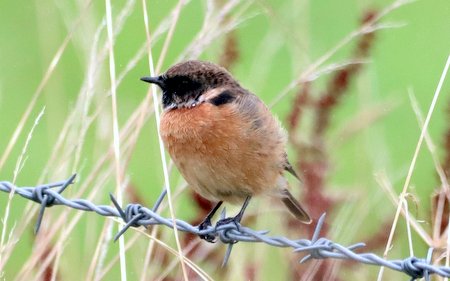
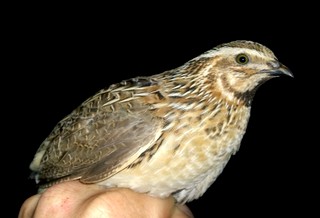
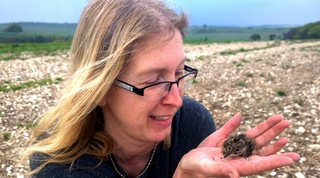
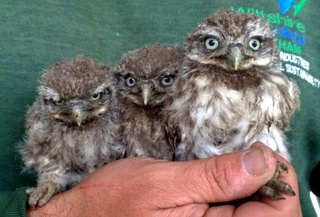
I’ve managed to get behind in reporting in this year’s CES catches but basically the number of birds from the first three sessions compare favourably with last year. The main differences seem to be in the number of ‘resident’ species we are catching or rather failing to catch. Having ringed this site since 2003 the numbers of Wren, Robin, Dunnock, Blackbird, Song Thrush, Blue Tit, Great Tit and Chaffinch are the lowest we can remember them with Tits and Robin’s particularly poorly represented.
Session 3 started by getting out of bed at 0250 in order to race the approach of daylight. We arrived on sight at 0410 having driven through patches of dense low mist to be greeted by 1°c temperatures and as we are pretty efficient at getting the nets up these days we had all 14 CES and 4 bonus 60’s up in 45 minutes.
Catching was relatively slow after the first net round but we still managed to finish with 90 captures for the morning. A Grasshopper Warbler was singing from the other side of the fence line we aren’t allowed to cross as it’s on the artillery impact range which the Dutch army were using with some gusto all morning, so we able to try for it.
On the safe side of the fence oddities for this time of the year included a singing Sedge Warbler which evaded the nets and a silent Reed Warbler that did not. Best bird of the morning was a control Garden Warbler with an Icona Madrid ring. Worryingly, no juvenile birds of any species have been caught yet. All the Tit boxes we have up in this area are all still at the egg stage with nothing hatched at all as are all the Swallow nests we've checked so maybe everthing here is just 2 weeks behind average like many other areas of the country. GD/PD/OF/AB
CES session 1
Wren 1(2), Dunnock 1(2), Robin (2), Nightingale (1), Blackbird 1(1), Lesser Whitethroat (1), Whitethroat 11(4), Garden Warbler 1(3), Blackcap 35(3), Chiffchaff (6), Willow Warbler 1(5), Long-tailed Tit (1), Chaffinch (2), Linnet 2, Bullfinch 2(2)
CES Session 2
Wren (1), Dunnock (5), Robin (2), Blackbird (1), Song Thrush 3(3), Lesser Whitethroat 4(2), Whitethroat 5(2), Garden Warbler 5(3), Blackcap 7(9), Chiffchaff 1(2), Willow Warbler (1), Long-tailed Tit 2(3), Chaffinch (1), Linnet 3, Bullfinch (3)
CES session 3
Wren 2(3), Dunnock (9), Robin (4), Blackbird 3(4), Reed Warbler 1, Lesser Whitethroat (3), Whitethroat 5(12), Garden Warbler 3(5), Blackcap 6(3), Chiffchaff 1(5), Willow Warbler 1(3), Goldcrest (1), Long-tailed Tit (5), Linnet 6(1), Bullfinch 1(3)
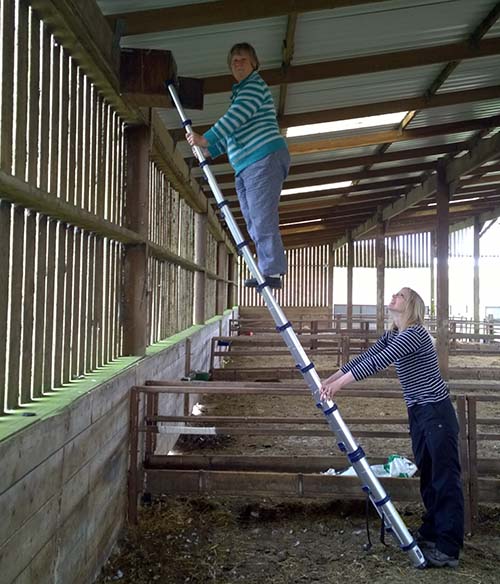
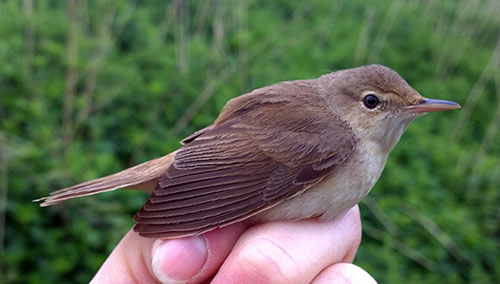
My wife and I went for a walk around Moulden Hill Lake last week and we took a slight deviation and ended up walking round Purton Wood that is adjacent to the lake. Purton Wood is comprised of a network of ancient hedgerows and what was once fields has been planted with a mixture of trees but unfortunately they have been planted a bit too formally and it is taking a while for an undergrowth to develop. However, during our walk we were struck by the number of birds present and so I got in touch with the Woodland Trust who owned the wood and they were extremely helpful in providing us with access. This is really exciting because we also ring at Swindon STW that is 2km south and the disused canal that is 700 metres south west so we are monitoring the three main wildlife areas within the River Ray Parkway and the data we collect will enable us to show how important the area is as a wildlife corridor through Swindon.
I set three long lines of nets to enable monitoring of a cross section of woodland habitats. I was joined by Noah and his parents, so as ringers we had a scribe each! Two male Cuckoos were both vocal and visible on and off all morning and we also saw a Barn Owl fly over which was highly unexpected. Fairly soon after, we were joined by my brother and his wife and my 6 year old niece.
As expected, most birds were caught at the cross sections of the ancient hedgerows and though the catch was excellent, as is common in the spring we heard a lot more warblers than we caught. The site has a very healthy population of Blackcaps, Willow Warblers and Chiffchaffs and we retrapped two Blackcaps that were originally ringed at CES sessions at Swindon STW.
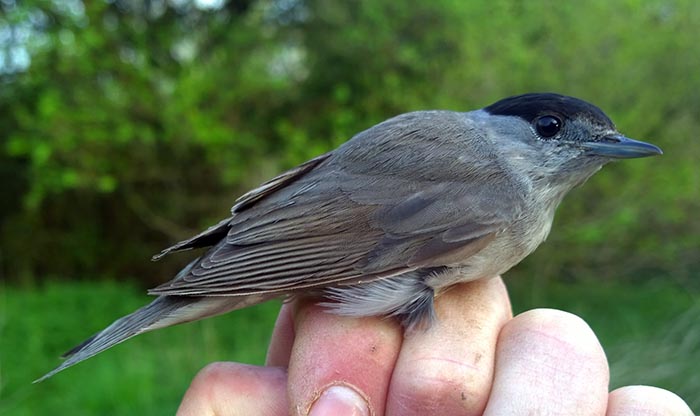
4 Bullfinches provided further evidence of the quality of the ancient hedgerows and a couple of Reed Warblers were quite a surprise, especially the one that was singing in the middle of a dense hedgerow.
It was great to show my little niece the birds and she really enjoyed it. This site is very public and we met quite a few people out walking their dogs and we were able to provide them with a wildlife education lesson as they enjoyed their morning, and what a morning, flat calm and sunny. In fact it was so sunny that we saw our first odonata of the year in the form of Banded Demoiselle along with 5 species of butterfly.
We finished up with 75 new and 2 retraps which is very good for the time of year and I am sure that we are going to be back here quite a few times. MP, NW
Blackcap 12 (2), Whitethroat 3, Lesser Whitethroat 2, Willow Warbler 5, Chiffchaff 5, Reed Warbler 2, Bullfinch 4, Blue Tit 8, Great Tit 8, Long Tailed Tit 3, Song Thrush 1, Blackbird 4, Dunnock 6, Robin 7, Wren 5
We had to abort CES session 1 last weekend because the nets froze! It was probably just as well because the low temperature would have affected the catch and thus the session would not have been comparable with last year.
Luckily with me working in Swindon I have a greater flexibility to be able to get out and so we managed to get out on a Thursday. Simon and I set the nets and we were joined by Phil just after the first round.
It was a beautiful calm, warm morning and it was fantastic to retrap Reed Warblers from previous years. We did very well for Sedge Warblers and 9 new was a very good but we also processed a UK control. We also caught a Long Tailed Tit that has been ringed elsewhere, this is very unusual and it will be interesting to see if it is a genuine control or just a short distance movement from elsewhere in Wiltshire.
We don't catch a lot of finches on CES but today we caught a Linnet, a Chaffinch and 2 Bullfinches. We heard and then saw a Cuckoo, such a fantastic sound and a joy to hear once more. The male Cettis Warbler was calling incessantly again but the first bird out of the net was an unringed Cettis Warbler that not only is a long overdue first for Simon but was a female with a early stage brood patch so this constitutes the first breeding attempt of this species for the site. Let's hope this is the start of the colonisation of the site and also the River Ray Parkway for this lovely little bird.
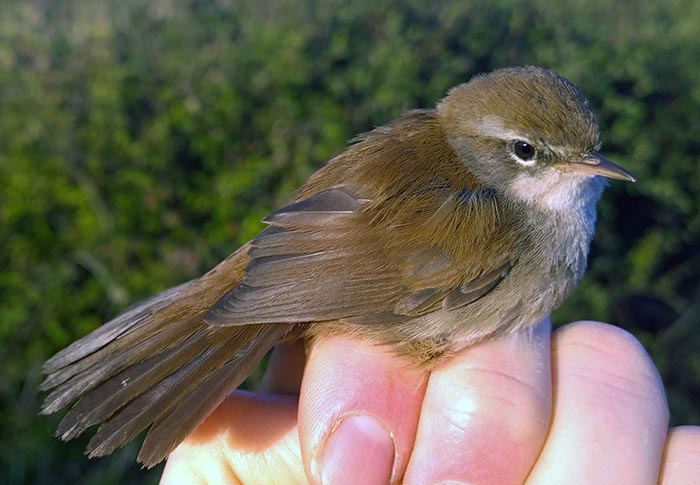
I left Simon and Phil to finish the session off and they were joined by Jack who ringed a few and helped take the nets down. 39 new and 38 retraps totalled 77 birds of 15 species processed that is higher than the comparable session last year. MP, SW, PD, JN
Reed Warbler 5 (8), Sedge Warbler 9 (1), Blackcap 8 (4), Cettis Warbler 1 (1), Whitethroat 3, Lesser Whitethroat 1, Linnet 1, Chaffinch 1, Bullfinch 2, Blackbird 3 (4), Dunnock 0 (5), Robin 0 (2), Wren 2 (2), Long Tailed Tit 1 (6), Great Tit 1 (5)

Wheatear, 5 Whinchat, 10 Stonechat, Yellow Wagtail, 180 Linnet, 30 Corn Bunting, Reed Bunting, 150 Meadow Pipit, 8...
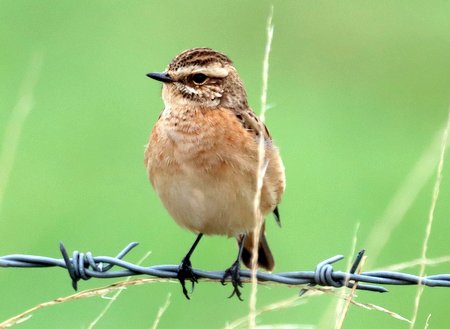
Wheatear, Whinchat, 15 Stonechat - SPTA east - Brian Heath